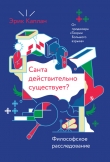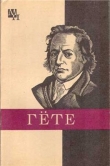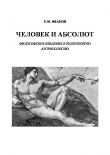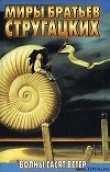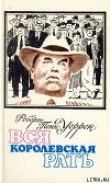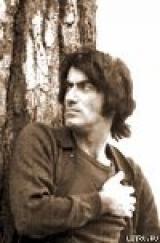
Текст книги "Философское"
Автор книги: Нодар Джин
Жанр:
Философия
сообщить о нарушении
Текущая страница: 11 (всего у книги 13 страниц)
2
Where is the beginning of the end which ends the beginning?
Kosma Prutkov
We understand the unity of consciousness and the un-conscious not through the categories of their binominal inter-relations, but as a single unbroken line. Psychics, if you will, is one unbroken line, where only a small portion, named consciousness, is illuminated. It is only this portion that our eye is able to discern, for the eye has only a limited solving capacity of vision. Everything that «precedes» and «follows» this illuminated portion is indiscernible in principle.
Now, as regards creativity. Creativity is a certain state of culture, a state which carries an intensified human, i.e. life-asserting sense. Culture is a term covering everything that Man has added to Nature: creativity is that which lends a genuinely human, i.e. life-asserting sense to the act and fact of addition, to the act and fact of man's penetration into Nature, to the act and fact of its transformation; for man is a being that aspires to remain in existence in despite of the laws of Nature. Culture is a result which retains significance even without any connection with man. A bomb created by man is also culture, but, created by man, the bomb already exists outside him and will exist after him and, what is more, – the bomb can change Nature without man's participation, i.e. it can change something not created by man. Creativity presupposes a living contact with Nature. A scientist comes to certain ultimate conclusions; these conclusions imply man's inevitable mortality; these conclusions are culture, they are knowledge, co-knowledge, i.e. death (as Byron said, knowledge means despondency, and the tree of knowledge is not the tree of life). But a scientist's creativity is life; while the scientist is in the process of creativity, the non-conscious is activated within him, owing to which the «ultimate content of his work on the problem of one's inevitable mortality, his own mortality included, is „not apprehended“ by him. The work of this scientist is not so much his conclusions concerning mortality, as establishing contacts with Nature, penetration into Nature, into that which is immortal. Israel Zangwill said that reason spells darkness rather than light; and in the above sense it is true. Reason offers an alienated knowledge of Nature, but the process of creation overcomes this deadly alienation. The process of creation is that which permits man to overcome the comprehension of his own finiteness, which makes man be „as God“, i.e. gives him an inner, insurmountably powerful sense of being an organic part of a whole oneness, of the whole-oneness of the Universe, a sense beyond the control of consciousness and generated by non-consciousness, – a sense of his own immortality, i.e., oblivion of the end.
This is, incidentally, the origin of the idea of eternal life in the beyond. We should like to emphasize here that it is not work, but the process of creation which is responsible for this effect. Work belongs to the sphere of the conscious, of the rational. The power of creation belongs, also, to the sphere of non-consciousness. It is Pathos that constitutes the essential principle of non-consciousness, a conventionally singled out sphere.
3
If there is a church, it is invisible to those who are inside it.
Leo Tolstoy
In what way are non-consciousness and creativity linked with the cardinal problem of existence? What are the general and concrete „issues“ of the theme we have selected? The answer le suggested in the schema of which we present a concise outline below.
As is known, the agonizing „truth“ about the inevitable end was discovered by human consciousness. This tragic discovery is connected with the fruit of the tree of knowledge. The serpent, or consciousness, led Adam and Eve to leave Eden of their own free will, Eden which embodied harmonious oneness, the oneness of man and the Universe. Eden preserved man from the knowledge of death and, consequently, from death itself. If it had not been for the fruit the serpent beguiled Eve with, if it had not been for consciousness, there would not have finally emerged the tower of Babel of homo-centrism, that tremendous self-deception.
Having withdrawn and having been expelled from Eden, man comprehended the inevitability of death and began to perceive „the futility and uselessness“ of his labors „under the Sun“. Outside the walls of Paradise, he began to reflect, to „cognize“, to philosophize or, as M. Montaigne put it, „to learn to die“. Armed with knowledge, man found himself face to face with the problem of the meaning and the aim of existence; cogito turned out, in the long run, to be the symbol of despondency, an index of scepticism, of the end, of a week will, of hopelessness. But despite the full clarity of this initial situation (comprehension of the finite nature of existence and futility of any activity), man, so to say, from the very first minute manifested something that should be called the greatest paradox: the paradox of continuing to live, the paradox of vitality. (Ecclesiastes, that most depressing of all books, a book which, from verse to verse enhances the sense of futility of existence, of unfathomable darkness, – ends in a paradoxical adjuration to go on following, the path of life). Despite the paralyzing content of knowledge (cogito, da'at), man goes on living and creating, obeying something as yet unnamed, and he lives on, i.e. from day to day, nearing the grave with an inexhaustive and unaccountable charge of optimism in his soul. (Schopenhauer, a man who, together with Ecclesiastes and Buddists, keenly felt „the reality“ of the pessimistic impulse, was, as is known, „the most jovial“ of men. What, then, is the motive.force?
Evidently, it is not consciousness. If we may resort to such an obviously conventional term, it is something else, namely, non-consciousness. This force, permeating the whole Universe and, therefore, present in man, constitutes his essential force. Despite cogito, it causes man to create, causes him to forget that of which man is fully aware, that is makes him forget, even at the last moment of his life, that it is really his last moment. Owing to this force, the sense of his non-finitness is unconsciously fortified in man, as well as his sense of being part of a non-finite world, of his link with that which, for Reason, is only „has been“ or „will be“. A sense of not supra-temporality, but of extra-temporality. This sense – a state of being firmly set in the world, is given to man not by argumentation, not by logic, but by something much broader.
The only thing that is known about this „something“ is that it is not consciousness. Any other definition would be unwarranted, as long as we attempt to fit it in any possible rationalistic category. Meanwhile, history can tell us about a number of attempts to comprehend this 'something», i.e., the structure of the sphere of the «non-conscious», attempts made earlier from mystical positions (the divine will), and now – from rationalistic positions (for example, the un-conscious in the school of psychoanalysis). Rationalists (Freud) understood «non-consciousness» as, for instance, an inconceivable experience of stable individual or collective psychic sets: the incest complex, the complex of original sin, etc. The search for rationalistic strata in the sphere of the «non-conscious» attempts to schematize something which, as a whole, does not lent itself to schematization, – all this is not, maybe, entirely groundless; however, the line of «non-consciousness» cannot be reduced to this. The presence of rationalistically explicable elements is explained and conditioned here by the fact that the illuminated portion of the «venue» begins and continues in the «blacked-out» portion, or, to put it more exactly, in the portion invisible to the eye. It is just these zones of junction, of transition, border zones that are, as a rule, investigated by researchers into the unconscious. And they investigate just what reason may investigate: the structure of consciousness and its zones bordering on the non-conscious. Investigation of the rules and mechanisms of transition of one into the other, etc.
However, the problem, as we interpret it, does not permit us to quite stop at this and requires further discussion.
4
The world we inhabit is only the reflected image of our inner chaos.
The Eden of the past is the Utopia of the future
Henry Miller
So, in the process of life-creation man «obtains» a sense of non-finiteness, an insuperable sense of optimism: in the process of creation, he equalizes his consciousness with his existence; this is where the so-called balancing set of consciousness steps in. This process of reciprocal equalization of the mind and life is, first of all, unconscious, natural, automatic. The second and the principal facet of the truth is that in the same process man comes back to the status he has lost forever, to the initial situation which was described in the biblical Eden scene. In other words, man «regains» the slate of harmonious unity with the world and overcomes the situation of homo-centrism, so detrimental to him. Man reintegrates himself. The radical essential aim of this fundamentally never-completed process is – too achieve happiness.
Thus, creativity is a return to that past «in Eden» which, unconsciously and covertly, lives on in the memory of mankind. We should add here that this past «in Eden» does not at all require recognition as a real historical fact; it is only known that it is «realized» at the level of an image translated into the pact from the future, into reality from a dream. That is why we determine the act of present-day man achieving «an Eden» status as a comeback, while creativity is regarded by us as the means of man's achieving this status.
At the same time, creativity means creation: not only a means of comeback as we understand it, but also actual creation, creation of everything that is termed progress, movement forward, everything that puts more space between humanity and the «pre-human border». In this lies the dialectical nature of creativity – to lead forward and, simultaneously, to bring back, to return. This is why we cannot but conclude that the comeback is achieved, in this case, by moving forward, in the form of inevitably moving away from the initial point, from any point on which our gaze is fixed now; that is why it is always a comeback to a new place, or, to put it more acceptably, to a new coil; we mean not only a new coil in the history of society as such, as a whole, but also a new coil in the «history» of an individual, a concrete personality.
The question arises here: if true progress (different from its contemporary partial, i.e. illusory representation) – is a forward movement that brings man bask to Eden, – where and how should he proceed in order to be adequately reintegrated? This is, actually, an age-old socio-political question, a quest for an answer to which has led and still leads men to generate a variety of philosophical-political and politico-economic theories. Although this question is, obviously, of prime importance, we focus our attention on the essentially human, ontological aspect of the problem stated in the title, comprehending fully – as will be seen lower down – its indiseverable bond with the above.
But now let us consider another question: why is it that creativity returns men into the «milieu» of harmonious unity with the world, the unity of Adam not only with the tree, but also with the Serpent, the unity of Adam and Eve, a return into a «pre-disintegrated» milieu. An answer to this question is prompted by art, the most full-blooded form of creativity.
5
And this is the writing that was written, MENE, MEHE, TEKEI., UPHARSIN
Daniel, 5:25
By its very essence, art unobtrusively reconciles us to reality. It equalizes our consciousness with our reality, equalizes each of us and humanity, harmonizes our relations with the world, however cruel this world may look in a work of art. A work of art is a work of an artistic, entirely harmonized world, a world that has an appeasing influence on us. Art actually gives us that enjoyment which Adam parted with forever when he left Paradise. Art is a powerful source of life-giving energy and optimism, understood not in the down-to-earth, everyday, customary sense, neither in the concretely socio-political sense, but in the broadest, «existential» sense. Art is, essentially, a life-inspiring, life-asserting, essentially optimistic force, allowing every one who is drawn into its sphere to overcome the uneasy sense of one's finiteness, to be reconciled with existence. In this measure, art is love which generates that peculiar state when man, however convinced he may be that miracles do not happen, does not venture, nevertheless, to maintain that miracles cannot happen.
Owing to what does art succeed in achieving this effect, most essential to our existence?
An instrumentalistic approach would suggest the following answer: art means striking a balance between consciousness and reality through uniting thought and sense (emotion), an idea and an image. This «correct» answer is, however, far from the truth. This answer would have been quite correct if we had agreed to «recall» the very fact which has long and completely been «forgotten» by literally all researchers. The very fact is that «thought» and «feeling» have never been, never are and will never be parallel, independent and separately-existing phenomena. At the same time, they have never been, are not and cannot be such not only in the sphere of art, but also in no sphere of human existence. The assumption of separate existence of thought and feeling which has become axiomatic, is a tremendous delusion of reason cognizing the human soul. This delusion has been the cause of unending human calamities, but it was, nevertheless, inevitable. It was predetermined at the very moment when man plucked the fruit and issued from the Gate; in doing this man doomed himself to vivisection with the lancet of reason in whose nature it is to dissect every living thing and to schematize it. Cogito operates with conventions, but since Homo Sapiens came to «exhaust» the notion of Homo, these conventions are not at all apprehended as conventions, but as realities. The paradox of conventions in the Homo Sapiens world lies in the fact that they are spontaneously transformed into facts («non-conventions»).
In fact, if we put in an effort and try to overcome the primordial (initial) conventionality in the problem of «thought» and «feeling (emotion)», then in the light of the meta-principle of the whole-oneness of everything in existence, the truth of the essential oneness of thought and sense (feeling) comes into evidence.
It is not enough by far to speak of their close unity. «Thought» and «feeling» are dissected elements of that single, indissectible, essentially whole principle which we term – for lack of a better word – «Pathos». Thought and feeling make an integral whole, like consciousness and non-consciousness; pathos cannot be dismembered structurally, in the same way as the human soul, human psychics cannot be dismembered. Creativity is the domain of pathos. Pathos is not consciousness, neither it is non-consciousness, it is something that encompasses, essentially and as a whole, those principles which, again too conveniently, in the dissecting language of science, we determine as consciousness, on the one hand, and as non-consciousness, on the other; or, by distant association – as idea and as image. (Paul Valery wrote that painting gives us the possibility to perceive things as they once were, – when they were looked upon with love…)
Thus, the tragedy of the end suggested by consciousness is overcome in creation. Creation is the realm of pathos, the realm of man's organic unity with the Universe, the realm of interpenetration of the human and the non-human, the reciprocal balancing and complete fusion of consciousness and reality. Consequently, pathos is the only instrument of existential optimism, of self-assertion of life and self-assertion in life, and, thus, the only instrument which helps to obtain inner freedom; for, as Spinoza rightly thought, man's freedom lies in overcoming thoughts of death. The conventionally assumed structure of pathos is, we repeat, whole-oneness of thought and feeling. The existentially optimistic impulse provided by pathos is testified to, to say the least, by those historical epochs in whose culture thought and feeling were comparatively close together. Such are Antiquity and the Renaissance, eternal in their enlightening significance.
To sum it up, we can say – it is creativity that effects man's unrealized «comeback to himself», i.e. to the state of organic oneness with the world, the comeback of man to Adam, and of Adam himself – to Paradise.
6
The Holy One – blessed be He – endows with wisdom only him who has wisdom.
Gemara
Now, concerning the connection of our observations with contemporaneity. To begin with, let us ask a question: if all the above is true, why is it that the above ideas have become so vital today? Why is it that just our time has seen the emergence of the tremendously important problem of the unconscious, a problem that could not have turned out to be a cardinal one if it were not closely bound with the cardinal aspect of existence? Why is it that Freud appeared in our day and why is it not yesterday, but today?
What happened, and happened today, is something most significant.
The steady and uncontrolled escalation of rationalism in all its manifestations, in all directions and at all levels, has become today that «quantitative leap» which changes the structure of existence rapidly. All the complex of such well-known processes as the «massification» of the world, as all-encompassing and all-penetrating peculiarization, the parcelling of the «separate» forces within man, his alienation from the Universe, the alienation of men from one another (moral and spiritual, political, economic and practical alienation), the rationalistic and hideously absurd, in its final results, formalization of human instincts which became an uncontrolled process of perfecting and accumulating means of self-destruction, – all this ponderous and redoubtable conglomerate of phenomena rooted in idolized rationalism hangs like a deadweight on the cogwheel of the very mechanism that serves to balance man's existence with his consciousness. This mechanism seems to be worn out, and the signs of it are multiple. They are, on the one hand, social depression and man's loss of initiative in expectation of the Apocalypse; on the other hand – the turmoil of chaotic spurts in desperate and unceasing efforts to find an outcome by means of all kinds of revolutions (economic, political, moral revolutions, «revolutions of consciousness», racial and class battles, confrontation of the sexes, of age groups, etc.). All this is, maybe, nothing new; but it is clear that the extreme intensification of even the most traditional processes cannot but provoke certain shifts in the generalized structure of existence. Homo-centrism, an old «infantile disease» of society, has taken on most hideously hypertrophic forms; it is expressed now in an all-round disintegration and decomposition of the whole, a falling apart that began from the very moment when man set himself apart not only from the world that was not man-made, but also from the entirely human world, from the world «authorized» by him. In a word, the mighty acceleration and boosting of habitual processes and changes have led to what contemporary «naturalists» term «the strong non-reversibility of time». The notion expresses difference between «after» and «before», a difference which has penetrated into now and has become the inner definition of now, thus doing away with the fundamental a p o r i a of existence: the past no longer exists, the future does not yet exist, the present is the zero border-line between both, – nil between nil and nil.
The contemporary tendencies of science include more and more clear demonstration of the strong non-reversibility of time even in its local elements: now reflects a macroscopic difference between «before» and «after».
In this sense, the present day is «nil between nil and nil»; from this angle, the idea of the essential peculiarity, the essentially contradictory nature of our epoch becomes understandable; it also becomes obvious that it is necessary to seek new and powerful impulses capable of ensuring the further functioning of those balancing systems which are the only things that permit man to overcome the tragedy of non-existence by means of a life-giving creative impulse. There is only one alternative to this quest – universal despondency, and, as a result, an end to all and everything through self destruction since our cogito offers us an abundance of means for that.
At the same time, it is just as clear that these impulses are to be sought, again, just in the sphere of creativity which can alone withstand the cancerous metastases of rationalism, in the sphere of the single stream of thought and feeling. The pressing nature of these quests was already felt yesterday, when the young Marx repeated with conviction the axiomatic idea of our ancestors – alas, mocked at by the cogito-centric history of human society: man affirms himself in the world not only through his thoughts, but also through all his senses.
… And through all the senses. The comeback of man to himself in our epoch of «nil between nil and nil» may be effected only on condition that all these forms of perceiving the world, the reaction to it and man's self-assertion in it which have throughout the centuries been suppressed by rationalism and devoured by the deified calf of consciousness, are cultivated. The power of reason should be applied today just to evolve and introduce an organized and ramified system cultivating pathos, confirming the whole-oneness of man's thought with all his senses. All the noble experience of reason, all the undying achievements of the rationalistic cultural tradition must, at the same time, control the rotation of this newly-organized system of «synthetic» Apollo-Dionisian institutes around the ancient axis of immutable and initial ethical norms, for the complete «comeback» of man to these norms, in a certain measure, constitutes the re-integration of man. It is only the triumph of a «pathos» attitude to existence, discernible in the synthesis of the diverse forms of consciousness that is capable of converting the Homo Apatheticus of today into Homo Sympatheticus, of Homo Sapiens into Homo Aestheticus, if the aeasthetical is understood as it should be: «the highest act of reason, encompassing all ideas, is an aesthetic act» (Hegel).
In the light of what has been said, it is hardly necessary to state more exactly that speaking of the synthesis of forms of consciousness, we mean by «consciousness», precisely all the wholeness and oneness of human psychics as it is, i.e., so to say, also «non-consciousness» which has generated and is able to generate no less majestic and stable forms of culture than consciousness. In the light of the meta-principle mentioned above, it should likewise be clear that the synthesis of the forms of consciousness presupposes further unification, a maximum inter-penetration of essentially indivisible principles – consciousness and reality, the spiritual and the material. The age-old but paradoxical and destructive tradition of differentiating these principles that have no separate existence, a tradition set up by the mind that always seeks convenience, was manifested, as is known, in a hideous dismemberment of the whole, indivisible Universe into two sectors. This dismemberment of the Universe took place, of course, only in the human head; but the initial conventionalities of thought could not but appear as undoubted non-conventional reality in our persistently homo-centristic world, a world where «all things serve man». During the whole course of his history as Homo Sapiens, man has scrupulously and indefatigably been remaking the world in the light of his rational conventionality which had acquired an actual effect of being absolute (un-conventional), in the light of the principle «the spirit and life», «consciousness and reality». During the ages of its activity, this principle generated a particular, independently functioning cultural system (in all its multi-component wholeness), that contradicted the natural order of things; however, this system took such firm root in reality that it even acquired the paradoxical ability to determine, to condition this reality. The word gave birth to the thing. However, the synthesis that we imply and consider desirable rests, first and foremost, on the wholeness and oneness of artificially (forcibly) separated principles, – consciousness and reality, the word and the thing, the spiritual and the material. This tendency towards unity can be detected today in various and, in many cases, quite obvious processes in contemporaneity.
It is in building up this tendency that modern society may find optimism; it is just in this tendency that society has the right to see a force which can withstand the corruption proclaimed by the all-disuniting «imperialism of reason». «Thinking! – exclaimed Paul Valery – This means losing the thread!» Today society is seeking for this lost thread, and the purpose of this thread is to reunite the dismembered parts of the world that was whole in the past and can be whole again in the future. And the essence of this thread is a «pathos» attitude to reality; creativity is the «highest thinking», and the «highest thinking» means recovering the thread.
Cogito alone is, in principle, incapable of holding man back at the edge of the precipice; still less it is capable of bringing his afterwards to «the promised land» of immortality. It is only in the life-giving atmosphere of a creative attitude to the world, only in the realm of «the highest thinking», of Pathos which rests upon the united unbroken platform of man's essential forces (consciousness and non-consciousness, «thought and all the senses»), is reason able to harmonize this one world. Only creation brings man back to himself. This is why, when discussing the best organization of this world of ours, Marx said that the future should provide every man with the chances for a maximum development to his creative impulses which, as we assert, brings man back to the past lying before him.
Опубликовано в «Бессознательное: природа, функции, методы, исследования» (Материалы Международного Симпозиума По Проблеме Бессознательного, Академия наук ГССР)
Изд-во Мецниереба, Тбилиси, 1978
